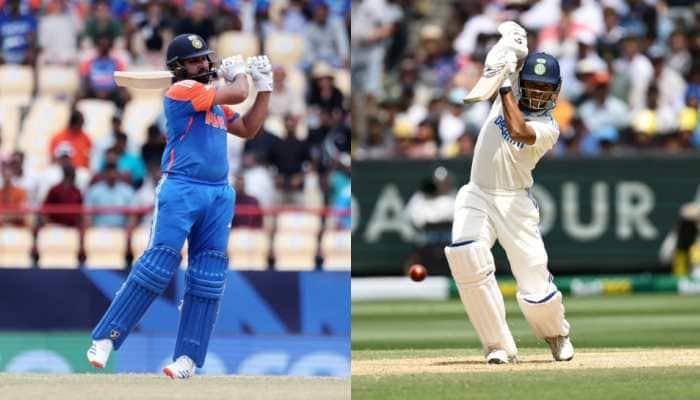Lockheed Martin F-35 Lightning II: The fighter jet that India does not want to buy, yet
There had been speculation that India is interested in the F-35 Lightning.
Trending Photos
) Two F-35 Lightning multi-role fighters in flight. (Picture: Lockheed Martin)
Two F-35 Lightning multi-role fighters in flight. (Picture: Lockheed Martin) The Lockheed Martin F-35 is a fifth-generation fighter jet that has been in the news in India thanks to speculation that the Indian Air Force has asked for confidential briefings on the aircraft. However, IAF chief Air Chief Marshal BS Dhanoa has categorically stated that India has officially not expressed interest.
The speculated interest of the IAF in the F-35 Lightning would be a departure from the rationale of quickly developing and producing the HAL Tejas to replace IAF's depleting squadrons of ageing fighters like the MiG-21.
Here is a quick guide to the F-35 Lightning:
* The F-35 Lightning is a fifth generation, stealth, multi-role, single-seater, single-engine fighter.
* What that means is, it is an fighter plane that is designed to excel at both air-to-air and air-to-ground roles.
* To understand that, the bigger twin-engine F-22 Raptor is specialised to be an air superiority fighter, meaning it is fitted out to effectively intercept and take down any aircraft in the sky.
* While the F-22 Raptor can attack ground targets, that's not what it specialises in.
* Specialised ground attack aircraft are generally referred to as bombers, and not fighters. They are more suited to dropping gravity bombs or guided bombs and missiles.
* Multi-role aircraft are designed to do a bit of both these roles well, though not at the specialist level.
* These role are not just to do with size and manoeuvrability. They are also greatly dependent on what kind of missiles of bombs a warplane is designed to carry. A lighter carry capacity generally means less suitability to ground attack roles.
* The F-35 Lightning was developed by a consortium of defence giants to meet the requirements of multiple arms of the US armed forces.
* There are three main aircraft used by different branches of the US armed forces that the F-35 Lightning was designed to replace.
* That's why it was designated as the Joint Strike Fighter programme.
* The three aircraft the F-35 is meant to replace are the A-10 Thunderbolt, the F-16 Fighting Falcon, and the AV-8B Harrier.
* The idea was that if you could replace three fleets of different aircraft with just a single plane, maintenance and life cycle costs could be low.
* The need for the F-35 Lightning was felt despite the existence of the F-22 Raptor purely because the input from various military wings indicated that the nature of air warfare today is more tuned to close air support, meaning warplanes striking targets on the ground before troops and armoured divisions can move in to secure the area.
* The F-22 Raptor is not suited for close air support. That's why it has never been used in combat so far.
* The F-35 Lightning is designed to meet the requirements of the US Air Force, Navy and Marines. So, it had to be designed to be capable of take-off and landing on short airstrips, landing vertically, and to be able to take off with catapulted launches and land with arrested recovery on aircraft carriers.
* The F-35 Lightning is a controversial project in the US, with lawmakers complaining about the cost overruns. The template of the complaint from lawmakers who dare to oppose the powerful arms industry is that the aircraft has already cost too much and taken too long.
* Different variants of the F-35 Lightning are presently at different stages of integration in a number of air forces around the world - mostly NATO countries and other US allies.
* Apart from different branches of the US armed forces, active F-35 Lightning squadrons are operational in the air forces of UK, Italy, Australia, Israel, Norway, and the Netherlands. The UK and Netherlands are presently testing, and the not deployed in combat.
* Orders for F-35 Lightning have been placed or under consideration by Denmark, Japan, South Korea and Turkey.
Stay informed on all the latest news, real-time breaking news updates, and follow all the important headlines in india news and world News on Zee News.
Live Tv







)
)
)
)
)
)
)
)
)
)
